The Pinckney Island National Wildlife Refuge is on the island before Hilton Head. It was supposed to have a dirt road where you could drive most of the length of the island. The road was closed though, so we parked and took a short stroll. We wished we had bikes with us so we could easily explore more of the island. The tide was out and it was almost noon, so the bird watching wasn’t especially good. After wandering for an hour or so, we decided to continue on to Hilton Head Island.
Hilton Head is known for being a vacation and retirement retreat for the well-off. Much of the island is covered with large, private gated communities. We’d picked up a guide to the historic sites on the island, so we set off to explore. The first site we tried to locate was Fort Howell. No road signs marked the entrance. After driving past the fort once, we finally found a tiny sign overgrown with weeds indicating the entrance. There wasn’t a parking lot to speak of – just a clearing in the woods – and a short walk took you to the “fort”. It would take a good deal of imagination to transform the few remaining overgrown earthen works sitting beside a housing development into a fort. Deciding we were lacking the necessary creativity, we headed back to the car.
Next we planned to stop at the Zion Chapel of Ease Cemetery. We also drove right by this site, since it was just a tiny parcel of land with a few gravestones on the side of the road. Several other historic sites turned out to be nothing more than markers. Bored by the historic tour, we decided we stop briefly at Shelter Cove and then continue our journey to Charleston.
Shelter Cove was a collection of upscale shops and dining establishments surrounding a marina. The centerpiece of the area was a large statue that functioned as a sundial.
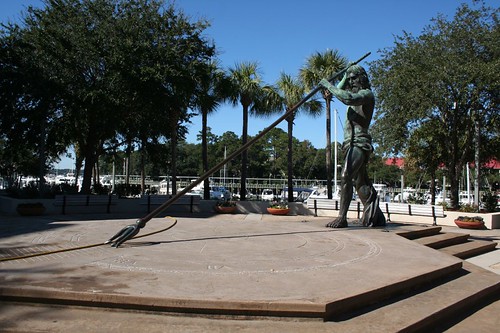

We strolled around the marina before retreating to the car again.
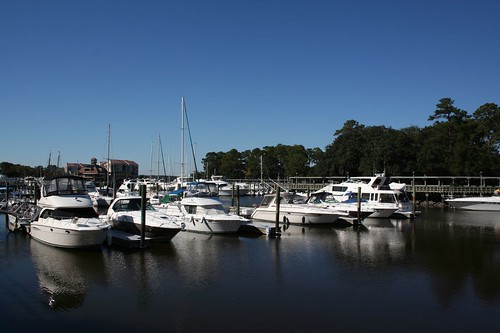
That evening, we stayed in a hotel in Mt. Pleasant, South Carolina, just across the river from Charleston. In the morning, we drove back to the historic downtown area to explore.
Charleston doesn’t have the plethora of parks that Savannah does, but it does have an equally walkable and interesting historic downtown area. Our first stop was the market. The market stretched through several brick buildings with vendors selling all manner of goods. Many were similar to products seen at markets anywhere in the country. However, there were also a number of people selling pretty woven baskets.
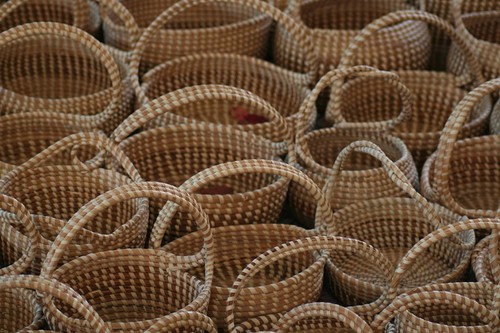
This woman looked like she’d had a tough day already, though it was only mid-morning.
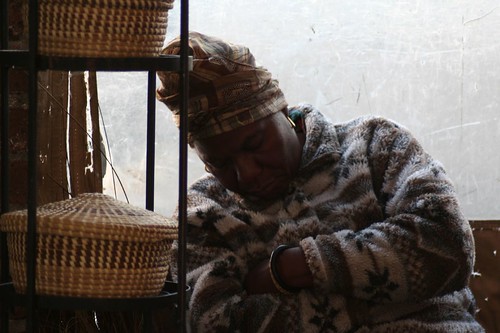
We later learned that the baskets were woven using a technique that West African slaves brought with them. The technique had been adapted to use local grasses, but the construction was very similar. Slaves used baskets made this way to separate rice from its hull.
Having made our way through the market, we had an early lunch at Jestine’s Kitchen, which came highly recommended by our guidebook as well as by the locals streaming out of it. Jestine’s served a number of southern dishes, including fried okra and fried green tomatoes. We decided to split a plate of pork chops with black-eyed peas and okra gumbo on the side. Yummy.
After lunch, we walked back to the waterfront. From there, we could see the Patriots Point Museum on the other side of the river.
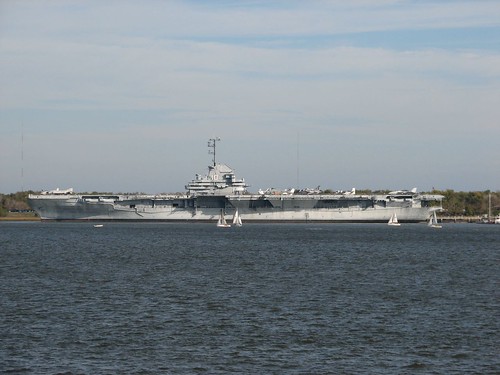
There was also a cruise shipped docked. The town seemed too quiet for there to be a cruise ship in port. The impressive bridge behind the ship connects Charleston and Mt. Pleasant.
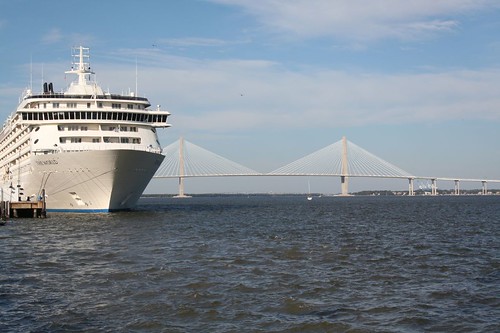
Our next stop was the Fort Sumter Visitors Center. To see the actual fort, you have to take a concessionaire boat trip an island in the harbor. We decided to skip the boat trip but did spend an hour or more browsing the extensive displays at the Visitors Center.
Fort Sumter was built in the 1820s as one of the series of coastal fortifications that included Fort Pulaski. It had an unremarkable first few decades of existence until, on April 12, 1861, it became the site where the first shot of the Civil War was fired. The fort was captured by the Confederates the next day and remained in Confederate hands until nearly the end of the Civil War. This was a major hole in the Union’s blockade of southern ports.
When we’d had our fill of the Fort Sumter Visitors Center, we took a walk around the Waterfront Park. The park has a long pier with shaded swings.

Here’s the view looking back at the park.
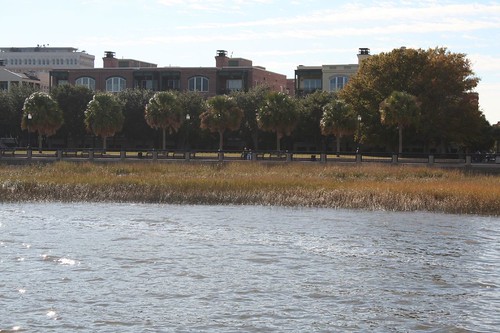
This funky pineapple fountain adorned the center of the park.
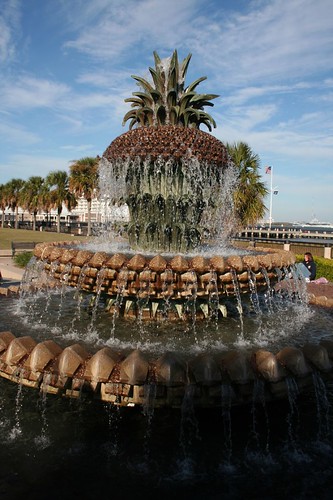
By now it was late afternoon and we were tired from all the walking we’d done, so we got in the car and drove around the southern part of the Charleston peninsula, taking in the narrow cobblestone roads and historic homes.
On Wednesday, we got up and used the gym that was free with our hotel stay. We’d expected the “gym” to be a small exercise room at the hotel, but it was actually a full offsite fitness center where we could show our room key to get in for free. It was a little bit of a drive but they had an impressive array of equipment and a class going on that we were welcome to join.
Our big activity of the day was visiting Drayton Hall. Drayton Hall is on of the major plantations in the Charleston area. The house is the oldest preserved plantation house in the US that is open to the public. The Drayton family used the house as a vacation property until the 1970s. They finally decided that the upkeep was too costly and turned the property over to a preservation society. Today the Draytons still return for Thanksgiving but otherwise the house is unoccupied.
Our tour started with a 45-minute program called “Connections” that described the life of the plantation’s slaves. Many of the plantations in the area produced rice. This plantation was one of a series of plantations owned by the Drayton family and was used more as a place to test new ideas than for full-scale rice production. The presentation detailed the horrifying conditions that slaves were forced to endure on the trip from Africa to America. In some cases, the conditions were so abysmal that fewer than half of the people who started the voyage survived.
The plantation was run on a task-based system. Each slave was assigned a task to complete for the day. Once his or her task was completed, the slave was free to spend time on personal ventures, such as planting small gardens for supplemental food. All the slaves lived in a set of huts set apart from the mansion. These buildings were originally thatched huts, as that was what the African slaves knew how to build. Later, they were replaced with wooden structures.
The mansion tour itself was very different than what we’d expected. Instead of being a fully furnished building, it was completely empty. The caretakers of the building have chosen not to have a climate control system installed, so they had to remove the furniture to preserve it. Rather than focusing on the family and their life at the plantation, much of the tour focused on the architecture of the house.
The symmetry of the building was very important as you can see from the front of the building.
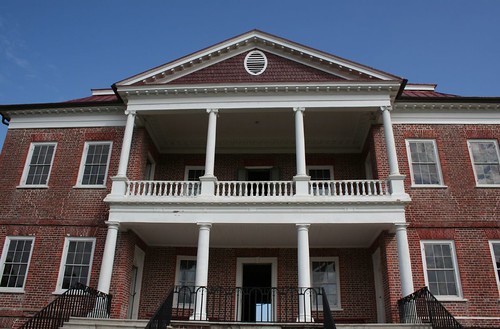
Looking off the front porch, there is a reflecting pool.
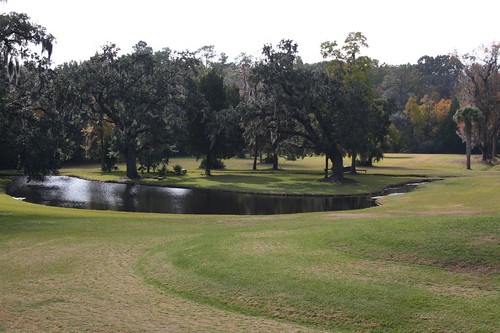
Inside the house were elaborate plaster ceilings, the originals of which were all hand crafted.

The original fireplace mantels were not done with marble because of the cost of procuring that material.
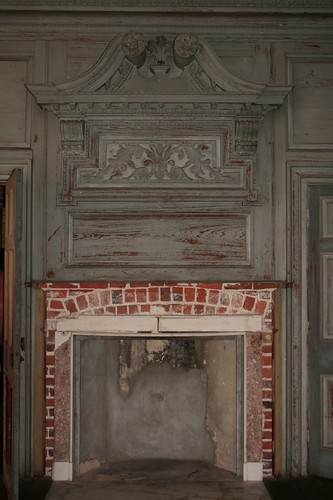
There were several quirky features in the house including doors that didn’t open (and never had) that served only to make a room symmetrical, and a tiny spiral staircase that allowed servants to access the two main floors from the basement area.
Looking off the back porch was a large expanse of lawn sloping towards the Ashley River.
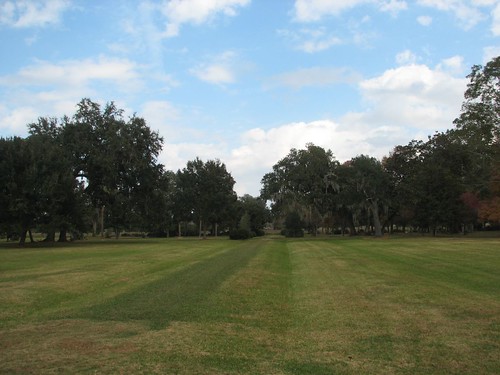
Here’s the back of the house.


And the front of the house from the reflecting pool.
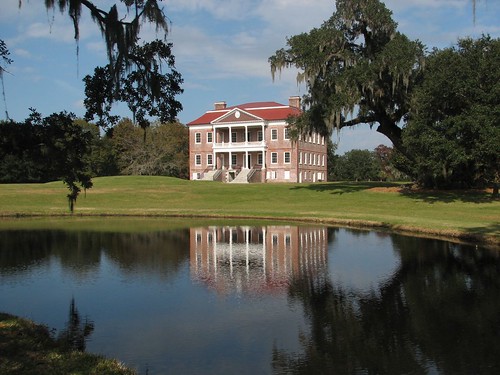
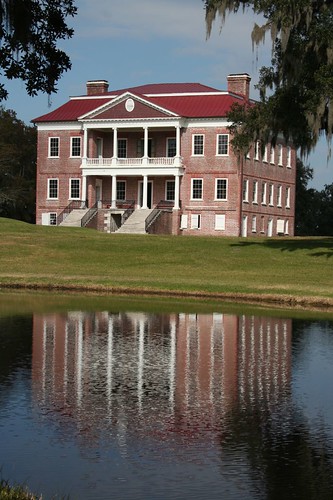
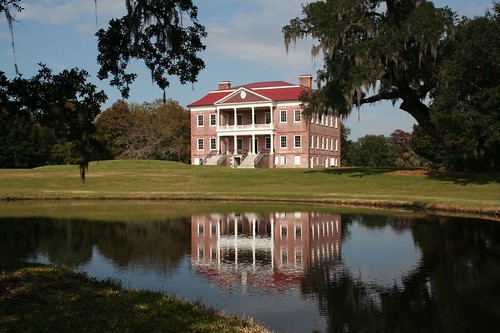
We took the marsh walk past some old rice fields and then took a couple more photos of the house on our way back to the car.
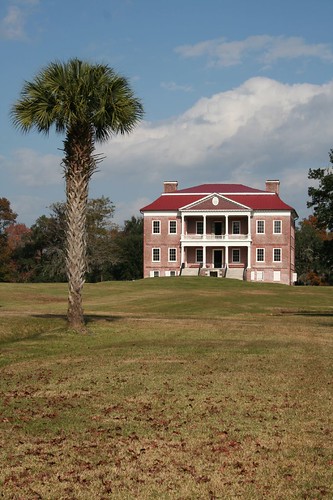
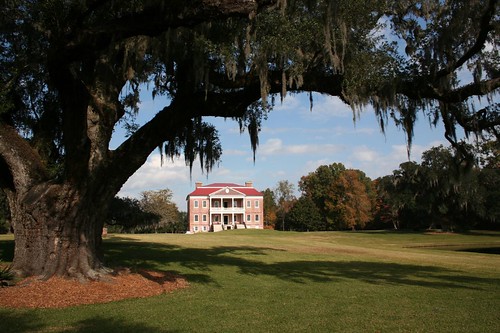
That evening, we used a Dining Dough coupon that we’d gotten at a timeshare presentation awhile ago, and we went to the Swamp Fox restaurant. The restaurant was in a hotel and was nearly empty. The food did not disappoint, though. Dinner started with a cheese spread and crostinis followed by delicious warm bread and butter. For the main course, Sarah had crab cakes and Brian had lamb in a really yummy sauce. There was also mac ‘n cheese, Carolina red rice, and pepper jack grits. Needless to say, we were stuffed by the time we left.
Tomorrow, on to Myrtle Beach.
No comments:
Post a Comment